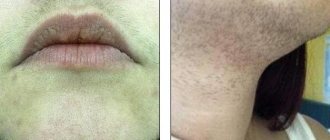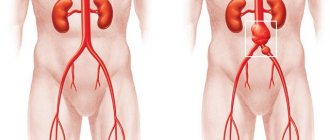Teaching children takes a lot of time and effort. However, there are problems that make helping a child learn basic life skills extremely difficult. What is dyslexia? What are the symptoms of the disease? What are the causes of dyslexia? What signs of the disease appear first? How is dyslexia treated in adults?
What is "dyslexia"?
Dyslexia is a disorder of the higher psyche that manifests itself in difficulties while learning to read and write. At the same time, the general ability to learn is preserved. The pathology is one of the most common anomalies in children. It is detected in 58 percent of students. At the same time, the disease is diagnosed much more often in boys than in girls. The severity of the pathology can vary significantly. The earlier the disease is detected and treatment started, the better results can be achieved in the future. However, you can begin to develop speech abilities at any age.
Children diagnosed with dyslexia have difficulty reading. They have a hard time learning this skill. The reason lies in the malfunction of certain brain functions. Thus, there is a violation of the transfer of the image as a visual image to the information received by a person. Please note that dyslexia is not a vision or hearing problem. It is also not associated with dementia.
In preschool age, the disease is detected extremely rarely. During classes, a child may experience fear that he will not be able to learn to read. This only makes existing problems worse. If treatment is started at the wrong time, the child may develop neurosis and decrease self-esteem. In this case, the patient’s behavior at home and in school may become inadequate. If you continue to ignore the problem, serious learning difficulties may arise.
Not all children can learn to read and write with equal success, and this may not be due to laziness or inattention. Parents of such children are increasingly hearing the word “dyslexia.” This is a whole complex of problems that arise when mastering various skills: reading, mathematics, writing, orientation in space and time, coordination and motor skills. Maria Stulova, a dyslexia correction specialist, the first Russian methodologist licensed by the international association DDAI, talks about what it is and how to help a dyslexic child.
Maria Stulova, dyslexia correction methodologist, member of the international dyslexia association DDAI, kinesiotherapist
As a specialist with many years of experience in the field of dyslexia, a methodologist and the mother of a dyslexic child (my daughter is almost 20 years old), I want to share my observations, experience and knowledge.
Dyslexic children may have outstanding abilities, but they also suffer greatly from the difficulties associated with dyslexia, from the rejection of their peers and, worst of all, from their teachers.
How to recognize dyslexia
First of all, you should not look for dyslexia in a child under 8 years old! Absurd mistakes when reading and writing, “mirror” and “jumping” letters - all this is acceptable for a child at the first stage of mastering reading and writing skills. It is worth worrying if the situation has not changed by the end of first grade.
What makes a dyslexic child different? There is a set of characteristic features that may differ and change. And this inconstancy is also a sign of dyslexia.
General signs
A dyslexic child seems very smart, but at the same time he reads and writes worse than his classmates. He is often considered lazy and behind both academically and developmentally. Naturally, he has low self-esteem and is very worried.
Such a child often daydreams, is easily distracted, forgets about time, and loses attention. He learns best through practical experience, experiments, observations and visual aids.
Reading, spelling, vision
When reading, a dyslexic person complains of dizziness, nausea or headache. And letters, numbers, words, verbal explanations confuse him.
While reading, the child thinks out the endings, does not finish reading the words, rereads them several times, but practically does not grasp the meaning. Frequent repetitions, additions, rearrangements, omissions and substitutions of letters, numbers and words are noticeable.
He writes with a huge number of errors, omitting, duplicating or replacing letters. Capital letters and punctuation marks are often missing; can write several words together without making spaces.
The child feels or sees non-existent movements while reading, writing or copying.
Seems to have difficulty seeing, although tests show normal vision.
Hearing and speech
A dyslexic has good hearing, he is able to hear what others cannot hear, and is easily distracted by various sounds.
He has difficulty expressing his thoughts, his speech is poor, monosyllabic; speaks with hesitation; does not complete sentences; stutters when excited; pronounces long words incorrectly; swaps phrases, words and syllables; has difficulties with the consistency of presentation.
Writing and motor skills
A dyslexic person has choppy or illegible handwriting. It is difficult for him to write and rewrite texts. He holds a pencil or pen in an unusual way.
Often confuses right and left, up and down, and has poor coordination of movements, which is why team sports and ball games fail. There is a susceptibility to motion sickness.
Math and time
A dyslexic person has difficulty understanding the terms of tasks, determining and calculating time, and when dealing with money. He uses finger counting and other techniques to make calculations. Knowing the answers, he cannot do calculations on paper.
Memory and cognition
A dyslexic child has an excellent long-term memory for impressions, places and faces. He is very observant and remembers in detail events that became his personal experience. At the same time, such a child does not remember information that he did not receive in practice. He thinks more often with the help of images and sensations, rather than sounds and words.
Behavior, health, development and personality
A child with signs of dyslexia is intellectually normal. But his behavior lags behind his age. Often the emotional maturity of a 17-year-old teenager corresponds to 13 years. A dyslexic person can be extremely disorganized and very pedantic, and in the classroom play the role of a buffoon, a bully or a silent person. He has a keen sense of justice and emotional sensitivity.
The number of errors in reading and writing and other symptoms increases sharply with difficulties, stress, as well as with haste and health problems.
How to find the cause of dyslexia
There are two main approaches to defining dyslexia.
The first is pedagogical : here we see the presence of symptoms, but there are no violations of the physics of the body and psyche. This can be determined after a thorough medical examination. In this case, science is not yet able to explain the causes of dyslexia.
Dyslexia can be observed in a clinically healthy child who is cheerful, open, free to communicate, and only becomes sad and upset when it’s time to sit down for lessons. This form lends itself well to pedagogical correction with a specialist.
The second is clinical and psychological : symptoms of dyslexia appear with disorders affecting brain function. These may be mental characteristics, neurological diseases, developmental pathologies, and so on. To find these violations, you need to contact specialists.
Dyslexia is not a disease and does not require treatment in itself!
Neurologist
Go through the maximum possible examination: encephalogram and brain tomography, Doppler examination of blood vessels. It is important to determine whether dyslexia is a consequence of some objective reasons. But it is much more important to promptly identify or exclude serious pathologies, disorders, and malfunctions in the functioning of systems that affect the functioning of the brain. Contact neurological diagnostic centers and institutes. If problems are identified, medical attention may be needed.
Psychologist
Any dyslexic needs the help of a psychologist. It will help you identify your child's stress levels and find the causes. Dyslexics often have communication problems and difficulties with everyday activities: going to the store on their own, traveling by transport. Fear and lack of understanding of what is happening to them makes them withdrawn and even more incomprehensible to others. And this makes their socialization even more difficult.
Neuropsychologist
The task of this specialist is to build new neural connections. This process lasts at least 9-12 months. If you are offered two-week or three-month courses, this is dishonest work and a money grab.
How to cope with dyslexia
Is it possible to get rid of it?
It is impossible to “cure” dyslexia once and for all; it can be corrected and the child can be given “tools” that will make his life and learning process much easier and will help him independently regulate his condition. But we cannot change the dyslexic’s perception of the world and the functioning of his brain. If we want to cope with dyslexia, then we must be patient , show our attention, participation and support to the child suffering from this illness. And dyslexia correction specialists will teach him the ways of mastering information that are right for him.
What is dyslexia correction?
If treatment for disorders causing dyslexia is necessary, then you should ask your doctors about its duration and effectiveness.
We are talking about the correction of dyslexia in cases where the child is clinically healthy. The Davis method, which is now considered the most effective tool for correcting dyslexia, is suitable here. The Davis Method is about understanding a dyslexic person's perception and vision of the world from the inside. The method itself is based on a special approach to teaching children and adults. This approach is highly effective and restores self-confidence in a very short time.
The indisputability of the methodology can also be assessed by the reaction of children who happily run to classes. According to the guys themselves, they are understood here and speak the same language with them. Children move forward step by step, master the keys of the methodology and open doors to a new world one after another.
Parental involvement in dyslexia correction
I consider it mandatory for parents to participate in the correction process and willingly share knowledge with them. Correction is necessary to build missing connections in the brain. And this takes time ! The success of such work depends on the child’s motivation, his desire to change the situation for the better, and on the degree of dyslexia itself. It can manifest itself in a mild form, or it can be such that the child cannot cope without the help of specialists and parents.
Help your child yourself
First of all, try to understand that your child has imaginative thinking. This means that his thoughts are pictures. No one taught the baby to describe images, so it is difficult for him to express his thoughts in words. Words that are not associated with images are just sounds for him, from which he gets tired. This is why there is often a feeling that the child does not immediately understand everything. That is why dyslexia is a frequent companion to the diagnosis of ADD (attention deficit disorder). That is why the speech of a dyslexic child is often confused, inconsistent, monosyllabic, and there is a clear sense of impoverished vocabulary in it. Try to describe La Gioconda in words. Feeling confused? A dyslexic child feels the same way when he needs to convey his thoughts.
Develop his speech
The first thing we must do is to begin to develop his speech and build up his vocabulary. But your child will not understand you if you explain everything to him as you are used to - “in words.” He needs images! You must learn to show him everything! There will be no problems with obvious things: these are objects, signs, actions. But what to do with prepositions, terms, interjections? Here you should come to a training seminar.
A dyslexic child masters and subsequently uses only what is his own life experience. Therefore, our task is to provide him with this experience. I advise you to stock up on dictionaries: explanatory, antonyms, synonyms, proverbs and sayings. Dyslexics take everything literally; they need to be taught to understand proverbs.
Speech development should become a way of your life! Why is this so important? Teaching a dyslexic to read is not that difficult. But he will not be able to understand the text: in his mind there are no connections between the images in his head and the words. You need to study words in different meanings. One preposition alone can have from 5 to 15 meanings. Similar difficulties can arise with mathematics and other subjects for the same reason. Numbers, notes, punctuation marks are all the same symbols, they are abstract for a dyslexic.
Don't force me to read
Until a child has undergone correction for dyslexia, reading causes him enormous difficulties. Imagine that you are reading in a moving car that is shaking violently on the road. You will not read and put the book down. The dyslexic experiences the same thing, but we make him read! The result is hysterics, headaches, nausea, tears...
Read to him yourself, give him more visual information: films, performances. All school textbooks exist in audio format; there are plenty of recordings of radio plays on the Internet.
Get involved in sports
Exercises for balance and coordination of movements are especially important: this is the formation of interhemispheric connections. Wushu, qigong, yoga, and trampoline are suitable here. And also breathing exercises: it allows you to achieve balance, balance of your internal state!
Be sure to consult a specialist, get diagnosed and get recommendations regarding your child.
Types of dyslexia
There are many types of dyslexia. Classification is carried out according to different criteria. Depending on what particular operation a person cannot perform while reading, the following types of pathology are distinguished:
- ungrammatical;
- mnestic;
- semantic;
- tactile;
- phonemic;
- optical
If a person is diagnosed with an agrammatic form of the disease, he or she experiences underdevelopment of the grammatical structure of speech. Additionally, there are problems with syntactic and morphological generalizations. The disease leads to the fact that a person changes the number of pronouns of nouns, incorrectly uses 3rd person past tense verbs, confuses case endings and incorrectly agrees adjectives and nouns. Typically, a type of disease is detected in individuals who suffer from systemic speech underdevelopment.
A patient is considered to have mnestic dyslexia if they have difficulty learning all letters. This process is caused by a violation of the connection between a specific sound and its corresponding letter.
In semantic dyslexia, there is an impairment in reading text comprehension. At the same time, the person reads technically correctly. This arises due to the unclear idea of the connection between a synthetic nature and the difficulties that arise in the synthesis of sounds and syllables.
Tactile dyslexia occurs in blind and visually impaired children. The cause of the development of pathology is the unclearness of tactile perception.
Phonetic dyslexia is most developed among schoolchildren studying in the lower grades. The pathology is characterized by the fact that within 2-4 years such children cannot learn to read correctly. Some students diagnosed with the disease have difficulty learning their letters. They cannot put them into syllables and words. Other children learn them easily. However, when reading, they make a large number of mistakes. This arises due to the fact that letters for them are not a generalized graphic sign. A number of experts are confident that the pathology occurs as a result of poor phonemic hearing.
Optical dyslexia is diagnosed in situations where a child has problems learning and mixing similar letters. In this case, the letters that the patient confuses may differ in one element or consist of parts of the same type, but differently located in space.
Based on the above, we can conclude that phonetic, semantic and agrammatic dyslexia arise due to the immaturity of speech functions. In this case, the cause of the appearance of tactile, monistic and optical varieties of the disease is the underdevelopment of mental functions.
Reasons for development
The disease is passed on genetically, so if one or both parents have it, the chances of inheriting this health problem increase dramatically. The exact cause of dyslexia remains unknown.
This disorder persists throughout life and its severity can vary. Among the predisposing factors, researchers in the field of mental disorders identify:
- Causes associated with intrauterine stay. The negative impact of pathological phenomena that arise during childbirth is considered: fetal asphyxia, premature placental abruption, and umbilical cord malformations. Each of these conditions can harm the brain while the baby is in the womb.
- Suffered traumatic brain injuries.
- Cured infectious lesions of brain tissue (encephalitis).
- Cerebral palsy.
- Antisocial lifestyle.
The destructive impact of each of these factors disables the main mechanisms through which the reading process is implemented - this is a combination of speech motor, speech-auditory, and visual analyzers.
Observations in the field of psycholinguistics make it possible to determine that people with dyslexia have impaired sequence of stages of visual perception, letter recognition, and the ability to combine them into a word. The ability to comprehend the material read also suffers.
What dyslexia looks like from a photo
Outwardly, dyslexia does not manifest itself in any way. Children with this disease may be no different from others. Problems for a person with such a disease arise in the process of mastering the skill of reading or perceiving the information read. Children may not understand the written text, and may also make mistakes when writing independently. It is impossible to determine the presence of pathology from a photo. It is usually discovered during the learning process.
Interesting fact. There are many famous personalities among patients with pathology. Leonardo da Vinci suffered from dyslexia. All his life he had problems with reading and especially with writing. Leonardo was left-handed and wrote from left to right. Scientists who studied his manuscripts used a mirror.
Albert Einstein also suffered from pathology. He had learning problems. It is known that he was a poor student at school. However, not everyone knows that this phenomenon is not due to sloppiness, but to developmental features.
Hans Christian Andersen literally could not write. The first attempts at writing attracted the attention of the public with their monstrous illiteracy. They laughed at the writer's mistakes, but this did not stop him. Initially, Andersen composed a fairy tale in his head, and subsequently poured it out on paper. There are known cases when publishers, shocked by the author’s illiteracy, returned manuscripts back.
Another dyslexic is Orlando Bloom. At one time, his parents gave him a choice. In order for a young man to get a motorcycle, he had to read 50 books. However, Orlando failed to complete his task. Today, an actor, mastering a new role, must do triple work. He has difficulty reading and learning the script. However, this did not stop Orlando from mastering French and becoming a global star.
Demonstration
Signs of a reading and spelling disorder:
- Reduced speed. Dyslexics take two to three times longer than other children. Slower reading makes it more difficult to understand what has been read, especially in long sentences.
- Linking individual letters to corresponding sounds is very slow and mistakes are often made. Instead of words that are difficult to read, children tend to read other words with similar letters.
- Some children are able to infer the content of a sentence from other words it contains, even if individual words are misread.
- Limited reading speed is also a major symptom of reading disorder in adults. This happens with complex, polysyllabic and rare words. In stressful situations, symptoms intensify. May manifest itself in counting (for example, when reading math word problems) and in learning foreign languages.
- Significantly large number of spelling errors. In free writing, words are avoided when children suspect they cannot spell them correctly. This is often perceived as limited vocabulary or a lack of linguistic ability. However, this is usually a compensation strategy to avoid spelling errors.
Visual stress:
- About a third of children with dyslexia report eye strain or visual distortions while reading. This subjective symptomatology (Mars-Irlen syndrome) includes: seeing letters moving across the page;
- blurring or forming strange patterns;
- spatial distortions;
- frequent blinking;
- loss of space on the page;
- headache.
Every child with dyslexia should undergo vision testing and if any refractive error is found, prescribed glasses or contacts should be used.
Negative thoughts:
- 40-60% of children and adolescents with dyslexia experience psychological problems such as depression, gloomy mood and anxiety. They feel rejected and disapproved by teachers.
- The rate of suicide attempts in adolescents with dyslexia is three times higher than in adolescents of the same age without dyslexia.
Symptoms of dyslexia
Symptoms of the pathology vary depending on the form. The clinical picture also affects the signs of the disease. The disease can be identified not only by reading impairment, but also by behavior, as well as the patient’s ability to adapt to modern society. If pathology is detected in a child, depending on the type of disease, the following symptoms may occur:
- Semantic form - there is no ability to perceive and remember the text read. The child faces problems with school performance. There may be poor memory and difficulty in sound analysis. The child is not interested in studying.
- Acoustic form - the patient experiences difficulty in reproducing letters that sound similar. It skips or rearranges sounds. Such a person is inattentive. He is unfocused and absent-minded. He has a bad memory.
- Agrammatic form - there is difficulty in reproducing endings and coordinating sentences. As a result, the person does not understand what he read. Pathology is present at any age.
- Optical - a person has difficulty reproducing individual letters that are similar in their spelling. It is much more difficult to understand what is being said in the information you read. Reproducing new information is also difficult.
- Phonemic form - a person often makes graphic errors. He can rearrange letters in a word, which leads to further loss of semantic meaning. When reading, the patient cannot perceive individual characters.
First group
The phonemic form can be noticed at a fairly early age, when the child learns to read. The main characteristics are the replacement, confusion or omission of letters in words and words in a sentence. The child may unknowingly swap syllables or sounds.
In the case of the semantic form, an adult does not understand the meaning of the words, phrases or text that he read. After some time, he begins to read syllables again.
In the presence of an agrammatic form, an adult constantly confuses endings, tenses of verbs, and incorrectly forms the numbers of pronouns.
Causes and prevention of dyslexia
Dyslexia is based on poor recognition ability. The child is often unable to remember sounds. Pathology may be characterized by impaired understanding of the text and its writing. In the future, this leads to problems with memorizing information by ear, selecting suitable words and forming speech in general.
In the formation of the disease, the hereditary factor is of great importance. If one of the parents had a reading disorder or a disorder in mastering school skills, the child is immediately included in the risk group.
Scientists studied pathology. As a result, it was possible to identify functional changes in the brain in people who suffer from pathology. At the same time, experts came to the conclusion that the pathology is the result of cortical dysfunction due to a congenital anomaly in the development of the nervous system and brain structure. Integration also plays a special role in the causes of illness and disruption of the process of combining parts into a single whole.
Most experts associate the pathology with the functioning of the left hemisphere of the brain and disruption of the areas responsible for speech recognition. Changing the coherence of functioning between these areas also plays an important role. A similar phenomenon may occur due to a broken connection. Thus, if there is dysfunction in the area of the angular gyrus of the brain, the right hemisphere and the middle occipital region, this can lead to problems with word recognition.
A child with dyslexia may also experience other reading problems. However, they differ significantly from the symptoms inherent in the disease. Thus, violations can provoke various kinds of difficulties in understanding speech. Sometimes there are visual problems and abnormal eye movements when reading. These phenomena are not classified as dyslexia. However, the above features somehow influence the learning of words.
Parents can try to reduce the likelihood of pathology and the consequences it leads to. To do this, it is necessary to undergo diagnostic tests to identify the disorder as early as possible. The presence of symptoms may be a reason for a course of speech therapy and medical-pedagogical correction. Additionally, it is necessary to form a functional basis of reading skills. For this purpose, work is carried out in kindergarten. It is entrusted to educators. Parents should also be involved in the development of the child.
Diagnosis and treatment
Diagnosis of the disease is usually carried out in primary school. The test for dyslexia includes testing not only children, but also parents, since the problem is inherited.
Exercises for dyslexics are carried out in the form of a game so that the child can relax and feel at ease.
Dyslexia can only be treated by correctly adjusting the teaching method. It is important to make this process interesting and involve the child. Correction of dyslexia should be carried out with the understanding that this problem is not a sign of developmental delay, but only the presence of unusual perception.
Watch the video:
Timely help for a child with reading and writing disorders will allow him to reach a level where the pathology will not affect his ability to communicate with people and live freely in a group.
Correcting dyslexia with exercises
The fight against pathology is carried out with the help of speech therapy sessions. The approach varies depending on the form of the disease. If dyslexia occurs:
- phonemic, then the essence of classes with the patient comes down to correcting sound pronunciation;
- monistic, then work is being done on the development of auditory and visual memory;
- semantic, then treatment will consist of working on mastering grammatical language norms;
- tactile, then special attention is paid to understanding spatial representation optically, work is being done on visual representation, analysis and synthesis;
- agrammatic, then treatment is aimed at developing the grammatical foundations of the language.
Drug treatment is also carried out. However, it consists only of taking B vitamins and omega-3 fatty acids.
More complex therapy is possible if there are concomitant diseases. So, if adult patients suffer from depression and nervous disorders, they may be prescribed dolphin therapy or hippotherapy. Today, experts have proven that communication with animals increases optimism and lifts your spirits. Additionally, it is recommended to engage in breathing and movement exercises, dancing and music. Attending a massage can also improve the patient's condition.
Doing exercises can help with dyslexia. They can be done at home. Exercises allow you to develop visual attention, perception and memory, help improve reading skills and enrich your vocabulary. Parents can do the following with their child:
- Use magnet letters. From these, the parent makes words, then attaches them to each other. The child's task is to separate them. Gradually, tasks can be complicated by composing a whole phrase.
- Take turns writing down words that begin with the last letter of the previous one. For example: dog - album - mom - England - apple - cloud - ocean.
- Combine exercises with massage. The child should lie on his stomach, and his parent should draw letters, syllables and words on his back. At this moment, the child’s imagination turns on, which allows him to more easily master reading and writing skills.
- The parent should draw letters, syllables and words together with the child. Actions should be taken wherever possible. Moreover, experts advise choosing unusual places. Letters can be drawn on sand, fogged glass, small grains or paper. They can also be cut out of paper, laid out or embroidered.
- It is recommended to place cards with different images in front of the child. They must be signed on the reverse side. The task of the exercise is to name words. The child must look for the corresponding picture and read the title.
By showing their imagination, parents will be able to invent their own exercises to help develop reading skills. However, it is better to make the correction together with a speech therapist. Regular exercise will improve the child’s condition. It must be remembered that the exercises must be carried out systematically. Otherwise, there will be practically no benefit from performing the actions.
Features of correctional work for this form of dyslexia
During training, you need to teach the child to combine syllables into one word, so that later he can establish connections with other words in a sentence and understand the meaning of what he read. For each form of dyslexia there are specific tasks aimed at eliminating the causes of their occurrence:
- An adult names a word by individual sounds, making pauses between them. The child’s task is to name this word.
- Now the adult pronounces the word syllable by syllable, pausing longer between pronouncing them. The child's task is to connect them together.
- Complete the word with the missing syllables.
- Suggest changing the first syllable so that a new word is formed.
- Make one word out of two words.
- Children are given cards with syllables arranged in a chaotic order and asked to make a word from them.
These exercises are aimed at developing the skills of sound-letter analysis and the ability to connect syllables. In addition to these tasks, invite children to match the names with the pictures shown. The specialist must form syntactic connections between words and the basics of grammar.
Therefore, in order for your child to learn to read and understand what he read, include exercises related to reading sentences and completing tasks for matching with suitable images, searching for a sentence that matches the meaning. You need to ask them to talk about what the child read and answer the question asked in the text.
An important area is working with deformed text. Children are offered incorrectly composed sentences. You need to distribute the sentences so that you get a single story. This task develops the ability to work not only with small syntactic units, but also with entire sentences.
These exercises will help the student overcome the difficulties of syllabic reading and learn to combine parts of words into a single whole and relate them to an object or action. But any specific form of dyslexia is rare; most often there are symptoms of several varieties. Corrective work should include tasks to eliminate these shortcomings.
Why is there no diagnosis of dyslexia in Russia?
In Russia, the term “dyslexia” is not used. The fact is that the country has an ICD-10 standard (Tenth Revision of the International Classification of Diseases), according to which there is only a specific reading disorder (code F81.0). This diagnosis is quite general because it does not distinguish between failure to understand printed words and failure to understand text. In the USA, dyslexia is defined more specifically; the phenomenon is described in the latest, fifth edition of the DSM (Diagnostic and Statistical Manual of Mental Disorders).
© pixabay.com
What prevents you from reading and understanding what you read?
The foundation of the problem is neurophysiology. Of course, it can be leveled out, but only to a certain extent. It is also believed that dyslexia has genetic causes.
After 130 years of studying the disorder, scientists generally agree that the structure of the brain's posterior left middle temporal gyrus is its cornerstone. Another nuance is a failure in the distribution of functions between the hemispheres. The list of causes ends with visual perception disorder. In people who read well, the eyes transmit different pictures to the brain. That is, the information from the right eye is slightly different from the information from the left. In this case, one eye has priority. The eyes of a dyslexic person convey exactly the same information to the brain, and this prevents it from being processed correctly.
© flickr.com
Mastery of reading
Reproducing the sound form of a word based on its graphic representation is reading. This process is opposite to writing in its psychological and physiological structure. When we write, we express the meaning in letters, and when we read, we understand the meaning through the perception of letters.
In the process of reading, speech-auditory, speech-visual, and speech-motor analyzers are involved. To read, you need to move your eyes, look ahead (antipathy) and go back (regression). If the freedom of movement of the eyes through the text is limited, then the reading process is disrupted, because the perception of words occurs immediately at the moment of fixation, that is, when the eyes stop on the line. The number of fixations depends on how familiar the words are, their structures, etc. The letters in the word play the role of landmarks. When we read, we do not perceive all letters, but only the dominant ones.
Etiology
Often the disorder is congenital, that is, the reading skill is initially formed distortedly. Dyslexia in children in this case is due to biological reasons. During the intrauterine development of a child, brain damage can occur, leading to depletion of the nervous system. As a result, the parts of the brain responsible for the psychological functions involved in the formation of reading skills suffer.
The loss or disorder of an initially correctly formed skill occurs as a result of the influence of socio-psychological factors, which include pedagogical neglect, insufficient speech contacts, hospitalism syndrome, and the like. Dyslexia can develop in schoolchildren if excessive demands are placed on them regarding literacy, or if learning is carried out at too fast a pace. In this case, the child experiences a state of psychological maladjustment. In combination with unfavorable social conditions, this leads to the appearance of disorders such as dyslexia and dysgraphia. In children, these disorders have been identified more and more often in recent years.
Feedback from parents about the Davis method
Reviews about this technique are mostly positive. Parents note an increase in their children's performance in school, as well as their progress in reading. They can absorb 50, and some even 60 pages a day. The student begins to write more legibly than before treatment. And the child himself becomes more active. It is easier to get him up early in the morning for school, although previously, as many note, they managed to do this with great difficulty.
Of course, it’s up to you to decide whether to use this technique or not, but the fact that it helps has already been confirmed by many parents whose children, unfortunately, are familiar with this disease.
Clinical and psychological approach
To understand what dyslexia is, it is necessary to consider it from different aspects. Thus, this disorder often occurs in children with systemic disorders of the central nervous system (diffuse, functional, local, organic). Such children suffer from partial deficiency of higher mental functions and have problems with stability and regulation of the mobility of mental processes. Children also exhibit pathological features of the emotional sphere: weakness of verbal-logical thinking with good figurative-visual thinking, normal adaptation in everyday conditions along with school maladjustment, and so on. The children have insufficient auditory-verbal memory and a deficit in graphic and visual abilities.
Many researchers associate the disorder with insufficient development of oral speech and among the factors of reading difficulty they name underdevelopment of sound-letter associations, as well as impaired phonetic decoding. Children have difficulty establishing code correspondences (letter-sound) and cannot automate this process. As a result, their cognitive activity decreases.
Symptoms
Errors in reading are not the only manifestations of the disorder. Experts who look at the problem more broadly also talk about the clinical signs that often accompany dyslexia. Symptoms, for example, include cerebrovascular disease and mental infantilism. A violation of reading skill directly manifests itself in a slow pace of speech activity and a large number of various errors. Several groups can be distinguished among them:
- mixing and replacing letters that indicate phonetically similar sounds;
- replacing graphically similar letters;
- rearrangement, omission/adding of syllables and letters, that is, distortion of the sound-syllable structure;
- problems with understanding a read word, sentence, text in the absence of violations in reading technique;
- agrammatisms, mirror reading.
Davis method
Correction of dyslexia according to the Davis system has gained great popularity in this area of treatment. This method was invented, as the name suggests, by researcher Ronald Davis. He was very familiar with this disease, since he himself suffered from it in childhood. His technique has several stages, each of which plays an important role in the treatment of dyslexia. Thanks to them, the child gradually develops his thinking, memory and attention.
Many experts and parents have managed to appreciate the positive effects of this method.











